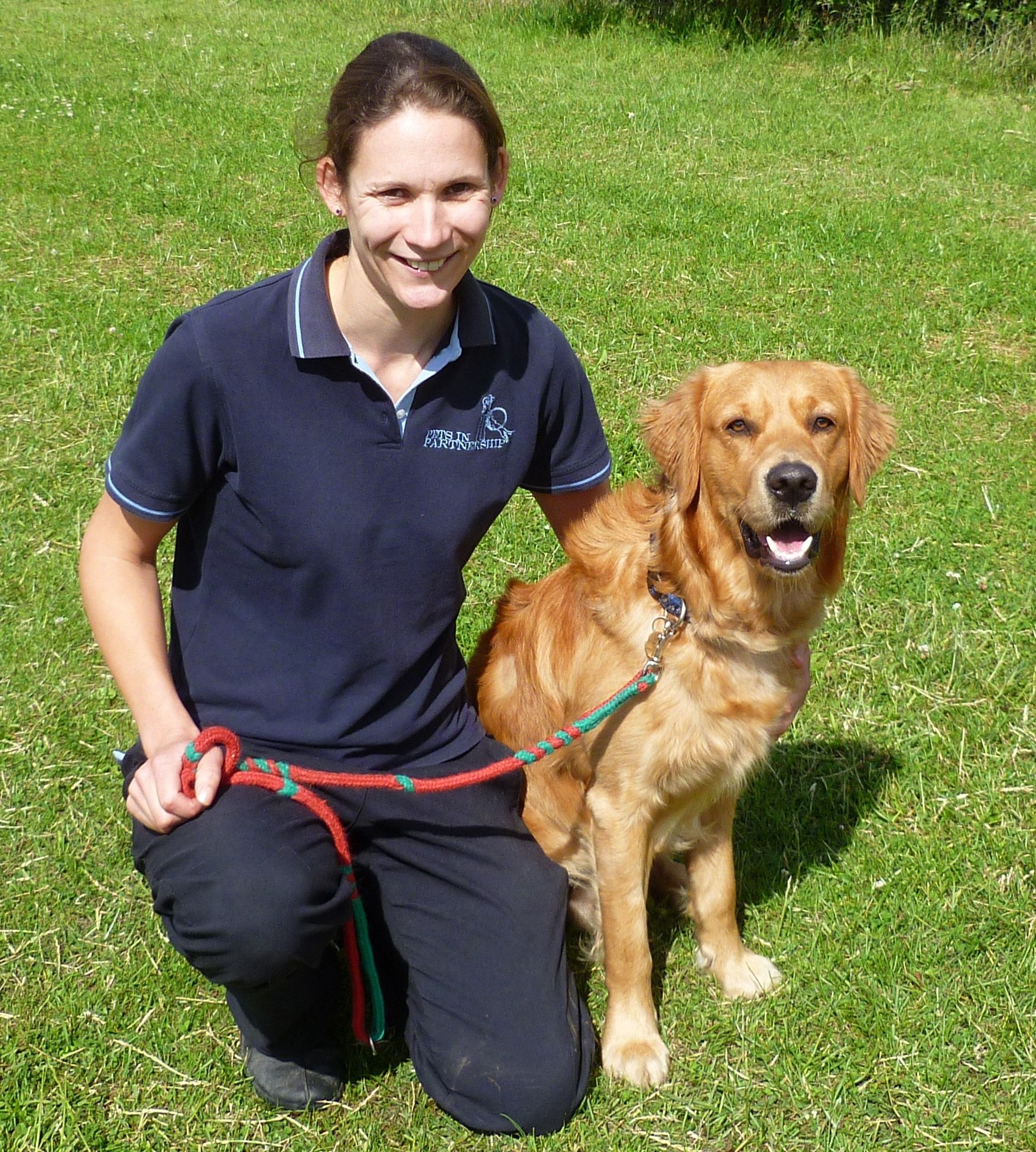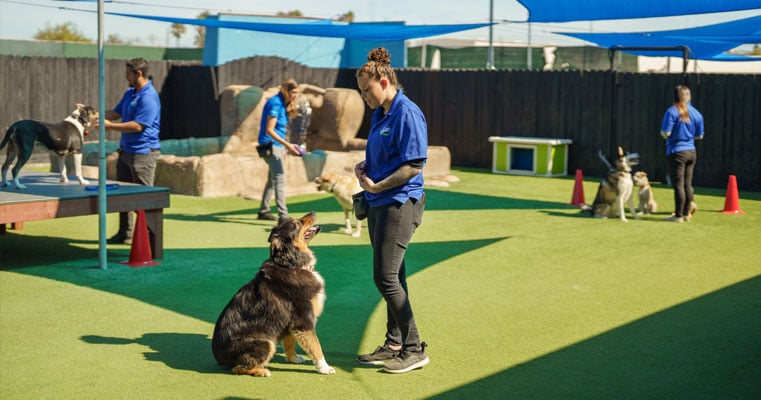Just how to Select the Right Method for Successful Dog Training
Important Tips for Effective Dog Training: A Guide for Animal Owners
Reliable pet training is a multifaceted procedure that needs a strategic method tailored to both the animal's character and the proprietor's goals. Trick parts such as developing regular commands, using favorable support, and promoting very early socializing play essential duties in cultivating a well-adjusted canine friend. Lots of family pet owners experience challenges that can hinder progression, leading to stress and unpredictability. Comprehending how to navigate these barriers can dramatically improve the training experience, eventually transforming the connection in between owner and pet. What are the essential techniques that can be employed to make certain success in this venture?
Recognizing Dog Actions
Comprehending pet habits is essential for efficient training and fostering an unified partnership between pooches and their owners. Pets communicate largely through body movement, articulations, and actions, making it critical for owners to analyze these signals accurately. Acknowledging a pet's position, tail placement, and ear orientation can supply insights into its psychological state. For example, a wagging tail does not always suggest joy; it can also indicate enjoyment or anxiety.

Socialization plays a substantial duty in dog behavior; exposure to numerous settings, individuals, and other animals can dramatically impact a canine's personality. In addition, factors such as breed attributes and private temperament ought to lead training approaches, as some breeds may have details behavior traits that require customized approaches. By comprehending these elements, owners can develop a helpful environment that motivates favorable behavior, bring about effective training outcomes and a deeper bond with their animals.
Establishing Regular Commands
Effective interaction with your pet dog begins with developing consistent commands. This foundational element of training is crucial for fostering understanding between you and your pet. Consistency in the commands you make use of guarantees that your canine can accurately link particular words or expressions with the preferred habits.
When selecting commands, choose clear, distinctive words that are easy to set apart and claim from one another. Prevent making use of similar-sounding commands that may perplex your dog. For instance, using "sit" and "remain" is suitable, yet "sit" and "hit" might lead to misunderstandings.
Additionally, preserve the exact same tone and quantity for every command. Canines are sensitive to vocal signs, so differing your tone can create confusion.
It is similarly essential to ensure that all relative are on the very same page concerning the commands made use of. A united front in command usage will certainly protect against combined signals and reinforce the knowing procedure.
Favorable Support Strategies
The power of favorable reinforcement in dog training hinges on its capability to urge preferred habits with benefits and appreciation. This strategy is grounded in the principle that habits complied with by positive results are more likely to be repeated. By including favorable support into your training program, you can successfully shape your dog's behavior in a positive way.
To apply positive support, it's crucial to recognize what motivates your dog, whether it be treats, playthings, or verbal praise. When your dog more helpful hints does a preferred activity, such as resting on command, right away reward them with a reward or love. This organization between the command and the positive outcome strengthens their understanding.
It's critical to timing the rewards correctly; delivering the support within seconds of the desired actions helps your pet dog make the connection (dog training). Furthermore, uniformity is key-- make certain that all relative make use of the very same commands and benefit systems to stay clear of complication

Gradually, you can reduce the regularity of treats as your pet discovers the actions, transitioning to praise or recurring benefits. This approach not only promotes a solid bond between you and your canine yet likewise promotes a positive discovering environment, making training a delightful experience for both.
Socialization and Interaction
Constantly revealing your dog to a selection of environments, people, and various other pets is important for their social development. Socialization ought to start early, preferably during the critical window of 3 to 14 weeks, when pups are most receptive to new experiences. Older pets can also benefit from ongoing socializing initiatives.
Introduce your canine to various settings, such as parks, pet-friendly shops, and city locations. This direct exposure assists them adapt to various stimuli, minimizing stress and anxiety and concern feedbacks. Urge favorable communications with various other pet dogs and individuals, guaranteeing that these encounters are risk-free and controlled to promote confidence.
Utilize organized playdates with well-mannered canines, as this can boost your canine's social skills and educate them ideal habits. Obedience classes and training sessions also supply superb opportunities for socialization, permitting your canine to connect with others in a supervised environment.
Display your canine's body language throughout interactions, as this will certainly aid you gauge their convenience degree. Gradually boost direct exposure to even more difficult circumstances while ensuring that each experience is favorable. A well-socialized pet dog is a lot more likely to exhibit balanced behavior, making them a pleasure to visit this page have in any type of setup.
Attending To Common Training Obstacles
Every dog proprietor will certainly encounter training obstacles at some point, no matter their dog's age or socializing level. Determining usual problems such as stubbornness, interruptions, and terror can aid in establishing efficient strategies for improvement.

Gradually introduce diversions as the pet comes to be much more skillful in commands. Short, constant training sessions are additionally effective in keeping interest.
Fearfulness can impede a pet dog's discovering process. Steady desensitization to the source of concern, matched with positive reinforcement, can help relieve stress and anxiety. Persistence is essential; never ever compel a canine into a scenario that triggers distress, as this may aggravate the problem.
Ultimately, understanding and resolving these typical challenges with a structured strategy will certainly foster a more productive training experience, enhancing the bond between canine and proprietor while promoting effective learning.
Conclusion
In summary, effective pet dog training depends on an extensive understanding of canine behavior, the facility of consistent commands, and the application of positive support techniques. Socializing plays an important role in establishing well-adjusted pets, while attending to usual training difficulties calls for patience and versatility. By implementing these necessary approaches, family pet owners can promote a solid bond with their dogs and promote preferable actions, ultimately causing an unified relationship between human beings and their canine companions.
Recognizing canine behavior is vital for reliable training and fostering a harmonious connection in between canines and their owners.Socialization plays a substantial duty in dog habits; direct exposure to numerous settings, individuals, and other animals can substantially influence a pet's temperament.The power of positive reinforcement in canine training exists in its capability to urge wanted behaviors hop over to these guys through rewards and praise. By integrating favorable support right into your training regimen, you can effectively shape your pet dog's habits in a positive manner.
In recap, successful pet dog training relies on a thorough understanding of canine habits, the facility of constant commands, and the application of favorable support techniques.